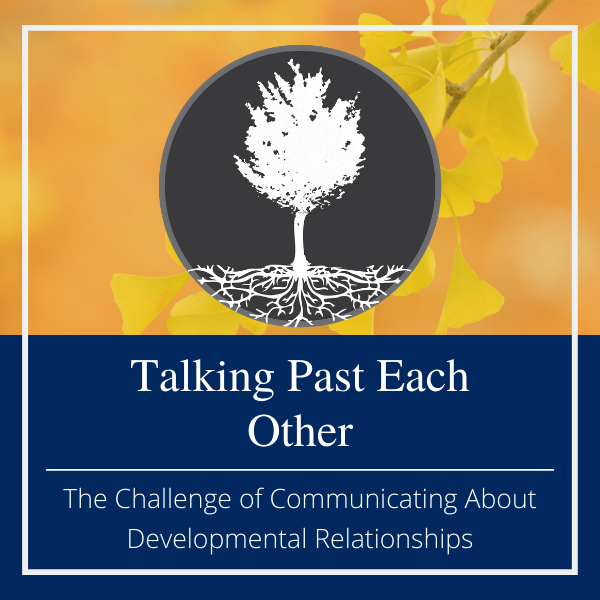Blog
Each One Teach One: The Importance of Mentoring Relationships
Mentoring relationships between adults and young people can be life-changing.
For as long as humans have existed, older individuals have taught and guided younger ones in academics, science, trades, and the arts.
What does it mean to be a mentor? How can adults do a better job of forming relationships with young people that help them grow and learn to be their best selves?
An Epic History
The first use of the term “mentor” comes from Homer’s epic Odyssey. When Odysseus, the king of Ithaca, left to fight the Trojan War, he left his son, Telemachus, in the care of his friend, Mentor.
Mentor was certainly not the first mentor, and we know he wasn’t the last. Mentors are changing lives and perspectives every day.
What Is a Mentoring Relationship?
A review of literature concerning mentorship identified several commonalities among the various definitions of the term.
- Mentors help people grow and accomplish their goals.
- Mentors are role models who provide emotional support and skill development.
- Mentoring relationships are personal and bidirectional.
- Most mentoring relationships are in-person, but hybrid and online mentoring have increased.
Conditions for Building Trust
A key element of every mentoring relationship is the sense of trust that develops between young people and mentors. Gail Manza and Susan K. Patrick, authors of The Mentor’s Field Guide: Answers You Need to Help Kids Succeed, write that trust is not something that is instantly created. Building trust takes time. “In reality, trust emerges slowly and tentatively from experiences that create the conditions for it,” they write.
What are the conditions that allow trust to flourish?
- Being reliable, consistent, patient, and persistent.
- Encouraging your mentee to take the lead in deciding what you will do together.
- Telling your mentee what positive qualities or behaviors you see in them.
- Having fun together and creating shared memories.
- Listening to cultivate understanding—rather than simply giving advice.
- Keeping your conversations private—not telling parents or teachers the details.
- Not pushing your mentee to achieve goals you have set.
- Being trustworthy and keeping your word.
Six Stages of Mentoring Relationships
The Mentor’s Field Guide outlines six stages that most mentoring relationships pass through. Like all relationships, the particulars vary according to individuals, but it’s helpful to recognize some common themes. The stages include the following:
-
Introductory. This is when mentor and mentee get to know each other and begin to establish trust. It’s important for the mentor to be reliable, to show up at the agreed-upon times, and to involve the young person in deciding how to spend time together.
-
Relationship-building. This is when trust and closeness grow, and the mentor can help the young person expand their range of experiences.
-
Growth. As the relationship grows, the mentor is encouraging the young person’s social, emotional, and cognitive growth. The young person might feel comfortable sharing problems or challenges, and the mentor can help guide them in problem-solving.
-
Maturation. This can be a time to work on life goals, or for younger kids, to discuss what they might want to be when they grow up.
-
Transition. This is a time when the relationship may change because of age or geography.
-
Termination. Either party might decide to terminate the mentor-mentee relationship, but that doesn’t mean the two people can’t stay in touch.
10 Tips for Mentors
Effective mentors are flexible and understand that it takes time to establish trust and build solid developmental relationships. The following tips are aligned with Search Institute’s Developmental Relationships Framework, which identifies five elements that help young people learn, grow, and thrive.
- Follow the young person’s interests. When adults are excited about activities or conversations led by the young person, they are more engaged. And the adult learns about what matters to the young person, building a stronger connection.
- Listen to understand. When a young person shares ideas or opinions, make an effort to understand them. Ask questions to learn more about the thinking behind the idea. (Remember that adolescents sometimes need to “try on” ideas as they sort out what they really think or believe.)
- Highlight future goals. Talk with young people about their future possibilities, particularly the things they look forward to or dream about. Thinking about the future can motivate young people to keep moving forward when they encounter challenges or distractions.
- Help the young person through failures. The ways adults respond to failures can either help or hurt motivation and self-confidence. Emphasize that failure and mistakes are a necessary part of learning. We can’t grow without reaching beyond our grasp, and we don’t always make it on the first try. Some adults use an activity called Learning from Failures and Mistakes that includes a video Failure Before Success, which discusses resilience in the face of failure.
- Break it down. Everyone can use help breaking down bigger problems, challenges, or tasks into more manageable pieces. Mentors can help a young person develop a plan to accomplish one step at a time while providing encouragement, feedback, and problem-solving help along the way.
- Shift levels of support. Pay attention to the young person’s progress, and pull back as they gain more control and confidence. Doing too much for young people takes away their opportunity to grow. Remember that keeping a warm and positive attitude boosts motivation, and irritation or criticism can shut down progress.
- Make decisions together. Whenever you can, make choices together, rather than just deciding on your own or turning the responsibility over to the young person. Sharing power in this way helps young people learn to articulate what is important to them and gain practice in decision-making and collaboration. It also helps them develop self-confidence and their sense of responsibility.
- Learn from them—and show it. Young people have a lot to teach adults—whether it’s about youth culture, technology, a subject they’re mastering in school, or an activity or talent they are cultivating, such as music, art, or sports. If a young person introduces you to something you like, let them know.
- Inspire them to see future possibilities. When you discover the young person’s interests, talents, hopes, and dreams, float ideas about education, activities, or careers they might explore as they grow up. Instead of saying, “You should be a dentist,” try something like, “Have you ever wondered what it would be like to be a dentist? What do you think you might enjoy about that?”
- Introduce new ideas and experiences. Young people shape who they are and who they are becoming by trying out different ideas and experiences. Find ways to expose young people to new people, belief systems, places, cultures, vocations, and opportunities that may not have ever occurred to them. You might begin by watching a good movie or series about an important political or social movement, then talk together about how it relates to the young person’s own beliefs or experiences.
Mentoring Relationships Are Developmental Relationships
Mentors are an important strand in the web of relationships that are necessary for young people as they face challenges, develop resilience, and grow up thriving.
Research shows that developmental relationships help young people discover who they are, cultivate the abilities that they need to shape their own lives, and learn how to engage with and contribute to the world around them.
When mentors take the time to build trust and form these critical relationships with young people, our communities are stronger, more resilient, and healthier.




